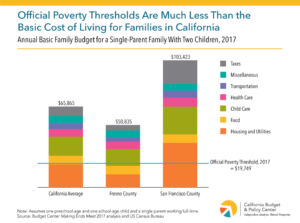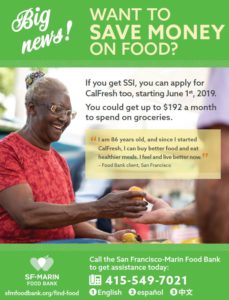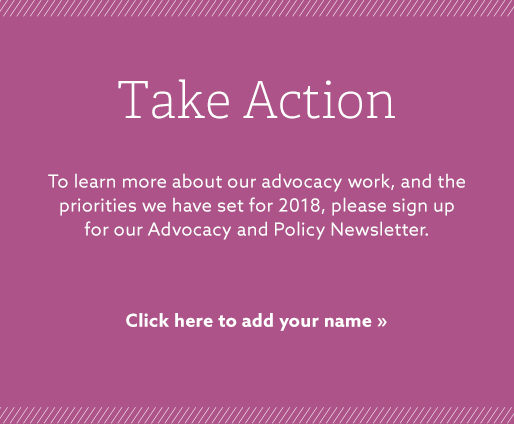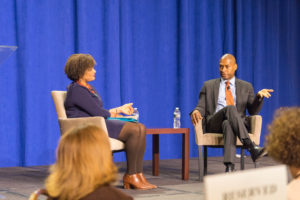After a hard-won advocacy effort by the Food Bank and aging and disability rights groups, for the first time in decades, CalFresh eligibility was extended to SSI recipients in June. Since then, over 14,000 San Franciscans have applied to receive food benefits! Our own multi-lingual CalFresh Outreach team has helped over 1,000 newly eligible neighbors apply.
One of the additional benefits of this historic policy change is an increase in the usage of CalFresh benefits at farmers markets in our community. The Heart of the City Farmers Market in San Francisco’s Civic Center has been operating an independent, farmer-operated non-profit farmers market since 1981, but CalFresh uptake at this market has exploded since the policy change, with the number of people purchasing using CalFresh benefits increasing by 90% over the same time last year.
Thanks to the support from the Stupski Foundation, which has identified improving access to the CalFresh program as a priority, the Heart of the City team has expanded staffing, set up CalFresh on-site enrollment stations, and purchased a second EBT machine to process CalFresh transactions more quickly. On their busiest day this fall, they served 1,538 customers, with CalFresh sales of $10,528! This is a fantastic example of how government, philanthropy, and the private sector can work together to improve food access for low-income people in our community.
Market Match Program Doubles CalFresh Purchasing Power
This growth has been enabled by an innovative healthy food incentive program called Market Match. Market Match is a dollar for dollar match, which allows CalFresh users to double their purchasing power at the farmers market. Annually, Market Match helps over 211,000 CalFresh recipients and increased the take-home revenue for 1,900 California farmers.
Benefits are Inadequate to Compensate for Cost of Living
Despite these exciting developments at the local level, many newly eligible CalFresh recipients are receiving the minimum benefit allotment of $15 a month, which definitely isn’t enough to keep a full fridge in our expensive community. According to Feeding America’s Map the Meal Gap research, the average cost of a meal here is $4.59, so incentive programs like Market Match are invaluable for helping our low-income neighbors meet their food needs.
There are efforts at the Federal level to address the inadequacy of benefit levels, including Closing the Meal Gap Act (H.R. 1368) backed by Representative Alma Adams (D-NC) and 113 House Members. Check out the list of co-sponsors to see if your Representative has endorsed this effort. If they haven’t, find out who represents you and reach out to demand they support this important effort!
Check out our staffer, Angelica, welcoming folks at the CUESA Farmers Market in the Mission







 There was plenty to see on Day One of the conference, but the highlight was a panel session that included Charles M. Blow, an Op-Ed columnist at The New York Times, and Fatima Goss Graves, president and CEO of the National Women’s Law Center. The conversation quickly turned into a back-and-forth on the complex intersection of institutional racism, our education system, income inequality – and how it all relates to food insecurity. When it was over, the panel received a several-minutes long standing-ovation.
There was plenty to see on Day One of the conference, but the highlight was a panel session that included Charles M. Blow, an Op-Ed columnist at The New York Times, and Fatima Goss Graves, president and CEO of the National Women’s Law Center. The conversation quickly turned into a back-and-forth on the complex intersection of institutional racism, our education system, income inequality – and how it all relates to food insecurity. When it was over, the panel received a several-minutes long standing-ovation.
Share